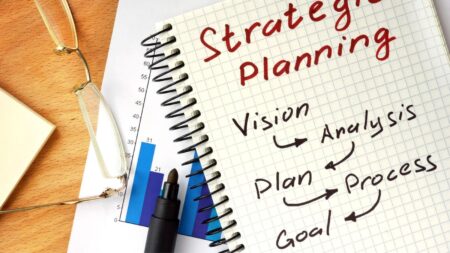Sammy Rubin is the founder and CEO of YuLife, the lifestyle insurance company providing life insurance, well-being and rewards in one app.
I consider myself an ambitious person. When I set out to achieve something, I throw myself into it with everything I’ve got.
But I have learned over the years—sometimes the hard way through burnout and exhaustion—that micro-actions performed daily, rather than sporadic longer sessions, are the most effective.
Focusing on micro-actions has helped me to achieve my well-being goals and also build a sense of self-trust and balance in my life. As the writer and philosopher William Durrant once wrote, “We are what we repeatedly do. Excellence, then, is not an act but a habit.”
Limiting activities to shorter bursts and rewarding consistency over output can seem counterintuitive at first, especially for high achievers. However, by following this process, once-elusive daily practices can transform into lifelong habits.
Motivation In Habit Formation
Research shows that “habit stacking” can make it easier to adopt new well-being habits. This idea, coined by author S. J. Scott, involves tying a new habit to an existing one, for example, adding five minutes of meditation to your daily commute or walking on the treadmill while attending a regular meeting.
Incorporating well-being habits into established routines makes it easier to make positive changes that you can stick to. But it’s also important to be clear on why you are adding new habits in the first place, for this can be a huge motivator.
I discovered this recently when I noticed I was walking less than I should be. It was through envisioning the kind of person I wanted to be, someone who is fit and healthy and a role model to others, that I was able to get back on track.
As James Clear says in his book Atomic Habits, “To change your behavior for good, you need to start believing new things about yourself. You need to build identity-based habits.”
Micro-Actions And Their Growing Relevance
New research has discovered that in the same way a car uses more fuel per mile on short journeys, humans burn more energy on micro-walks—such as walking to the bathroom or running a midday errand to the corner shop. Short breaks for activities throughout the day can make a considerable difference in energy expenditure, more than previously thought, especially for desk-based workers.
NHS research concurs that even a few minutes of movement can have measurable benefits. And while one trip to the bathroom won’t make you an Ironman or marathon runner, small daily behaviors that don’t require much time—for example, micro-walks, stretching every hour—add up over time into meaningful health benefits.
The success of this approach is tangibly felt by workplaces that adopt micro-break initiatives, where employees are encouraged to take a pause from work and stand up and move around throughout the day.
Researchers at Binghamton Manchester University also demonstrated that just 10 to 15 minutes of meditation a day can significantly improve our ability to focus on specific tasks. There is a clear correlation between mental well-being and workplace productivity, so businesses should seek out ways to incentivize employees to take breaks and engage in well-being activities, even while on the clock.
Micro-actions that fit seamlessly into people’s existing routines, complemented with rewards that build confidence, can drive lasting behavioral change in part of what has been called the behavior change wheel (BCW). This methodology aligns the capability of an individual with opportunity and motivation, offering organizations a powerful tool for promoting health and well-being among their staff.
Gamifying Micro-Actions
Adding elements of gamification to activities such as walking, meditation and brain training—for example, rewarding people with points or suggesting daily challenges—has proven to be a powerful tool for sustainably driving healthy habits.
For instance, the average person takes around 5,000 steps daily (although, according to some sources I found, many are still only managing 1,000 to 2,000 steps).
Yet data from my company shows that users who engage with an app or other means of tracking average around 2,000 more steps daily. This highlights the effectiveness of strong incentives to drive significant increases in activity.
And it’s not just about earning points and competing with coworkers—every 1,000 steps beyond 4,000 (up to 20,000 steps) can reduce the risk of early death by 15%. Research also shows that for men of all ages, just one to three hours of walking per week significantly reduces the risk of prostate cancer.
Our company’s research and experience also show that adding a competitive element to the app, such as a leaderboard, can drive people to take more steps. By tapping into people’s natural affinity for rewards and friendly competition, gamification encourages consistency in an enjoyable and achievable way.
Employers should carefully consider their choice of rewards and incentives to ensure they match their employees’ level of effort and progress. Getting this right has a long-term impact. It is clear that gamification is an effective way to ensure people engage in micro-actions that turn into lasting habits.
Small Steps Become Giant Leaps
The experience of a person regularly achieving their well-being goals can offer tremendous benefits for both employees and employers, especially as consistent micro-actions can significantly impact overall health and well-being.
I urge organizations to incentivize their employees to adopt healthy micro-habits. When it comes to improved health and well-being, slow and steady wins the race.
Forbes Business Council is the foremost growth and networking organization for business owners and leaders. Do I qualify?
Read the full article here











